Archives
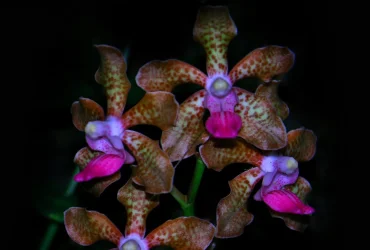 v13i2.342
v13i2.342ISSN: 1800-427X (printed)
eISSN: 1800-427X (online)
DOI:10.47605/tapro.v13i2.342
Submitted date: 3 September 2024
Accepted date: 19 November 2024
Published date: 22 December 2024
Pp. 141, pl. 32.
The pigmented reticulated pattern on 1st tergite of Scolopendra mirabilis from India
S. Mukherjee, S. Ray* & P.G.S. Sethy
*Corresponding author. E-mail: new.sumidh@gmail.com
Scolopendra mirabilis (Porat, 1876) is a species of centipede widely distributed in India, Southwest Asia, and East Africa. In India, it is recorded from Rajasthan and Maharashtra. During a recent survey, we found a specimen of S. mirabilis near Badar Mata Ka Prachin Mandir (26.5363°N, 74.5958°E), Pushkar, Ajmer District, Rajasthan, India on 27 March 2024. We deposited it in the Zoological Survey of India, Kolkata (ZSIK-TC-0094). The specimen's habitat was the arid sandy slopes of the Aravalli range. The area is sparsely vegetated, mostly by Acacia species (Fabaceae). Following Lewis & Gallagher (1993) and Lewis (2010), we identified the species. The body length of the specimen was 48.1 mm; posterior half of head plate with anteriorly diverging paramedian sutures delimiting basal plates; forcipular coxosternum with ramifying sutures laterally; a ramifying sutures-like pigmented pattern on the first tergite (Fig. 1); margination in tergites starts from tergite 17; tergite 21 with a median longitudinal suture; sternite with weak paramedian sutures; coxopleural process with 4 spines and 1 side spine; prefemora of ultimate legs with twelve spines ventrally; tarsus of ultimate leg without spur. Further study is required to understand its phylogenetic relationship as well as ecology and habitats.
Section Editor: David Cabanillas
eISSN: 1800-427X (online)
DOI:10.47605/tapro.v13i2.342
Submitted date: 3 September 2024
Accepted date: 19 November 2024
Published date: 22 December 2024
Pp. 141, pl. 32.
The pigmented reticulated pattern on 1st tergite of Scolopendra mirabilis from India
S. Mukherjee, S. Ray* & P.G.S. Sethy
*Corresponding author. E-mail: new.sumidh@gmail.com
Scolopendra mirabilis (Porat, 1876) is a species of centipede widely distributed in India, Southwest Asia, and East Africa. In India, it is recorded from Rajasthan and Maharashtra. During a recent survey, we found a specimen of S. mirabilis near Badar Mata Ka Prachin Mandir (26.5363°N, 74.5958°E), Pushkar, Ajmer District, Rajasthan, India on 27 March 2024. We deposited it in the Zoological Survey of India, Kolkata (ZSIK-TC-0094). The specimen's habitat was the arid sandy slopes of the Aravalli range. The area is sparsely vegetated, mostly by Acacia species (Fabaceae). Following Lewis & Gallagher (1993) and Lewis (2010), we identified the species. The body length of the specimen was 48.1 mm; posterior half of head plate with anteriorly diverging paramedian sutures delimiting basal plates; forcipular coxosternum with ramifying sutures laterally; a ramifying sutures-like pigmented pattern on the first tergite (Fig. 1); margination in tergites starts from tergite 17; tergite 21 with a median longitudinal suture; sternite with weak paramedian sutures; coxopleural process with 4 spines and 1 side spine; prefemora of ultimate legs with twelve spines ventrally; tarsus of ultimate leg without spur. Further study is required to understand its phylogenetic relationship as well as ecology and habitats.
Section Editor: David Cabanillas
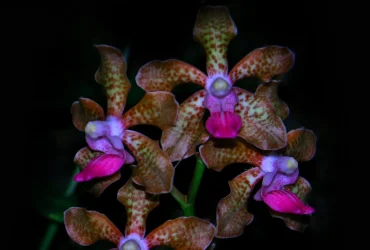 v13i2.341
v13i2.341ISSN: 1800-427X (printed)
eISSN: 1800-427X (online)
DOI:10.47605/tapro.v13i2.341
Submitted date: 11 July 2023
Accepted date: 10 July 2024
Published date: 14 December 2024
Pp. 138–140, pls. 30–31.
Genetic diversity and population structure of Crudia zeylanica (Fabaceae), Sri Lanka
M.G.C. Sooriyabandara, P. Wimaladasa, C.H.W.M.R.B. Chandrasekara, R.M.R. Nilanthi & P.C.G. Bandaranayake
*Corresponding author. E-mail: csooriyabandara@gmail.com
The genus Crudia (Schreb.) belongs to the family Fabaceae and is named after J.W. Crudy (1753–ca.1810), a plant collector from the Bahamas (Lanjouw & Stafleu 1954). The genus is pantropical and consists of approximately 55 species, mostly from Asia with others from Africa and tropical America. The species was first discovered and originally described as Detarium zeylanicum (Thwaites, 1864) and assigned to the genus Crudia in 1865 (Bentham 1865). The holotype was collected from Galpatha, Kaluthara District, and deposited at the National Herbarium of Peradeniya under C.P number 3714. Since then, there have been no further records of this species from the field and it has been categorised as extinct species in the IUCN Red List of 2006 and the National Red List of 2012. Crudia zeylanica was rediscovered in 2019 when a mature tree was identified based on its morphology in the Gampaha District of Sri Lanka. Subsequent explorations in the same district identified seven populations consisting of mature trees, saplings, and seedlings. With these findings, the National Red List of 2020 categorized C. zeylanica as a Critically Endangered (CR) species. Further, it is a protected species under the provisions of the Fauna and Flora Protection Ordinance of Sri Lanka.
Section Editor: Wendy A. Mustaqim
eISSN: 1800-427X (online)
DOI:10.47605/tapro.v13i2.341
Submitted date: 11 July 2023
Accepted date: 10 July 2024
Published date: 14 December 2024
Pp. 138–140, pls. 30–31.
Genetic diversity and population structure of Crudia zeylanica (Fabaceae), Sri Lanka
M.G.C. Sooriyabandara, P. Wimaladasa, C.H.W.M.R.B. Chandrasekara, R.M.R. Nilanthi & P.C.G. Bandaranayake
*Corresponding author. E-mail: csooriyabandara@gmail.com
The genus Crudia (Schreb.) belongs to the family Fabaceae and is named after J.W. Crudy (1753–ca.1810), a plant collector from the Bahamas (Lanjouw & Stafleu 1954). The genus is pantropical and consists of approximately 55 species, mostly from Asia with others from Africa and tropical America. The species was first discovered and originally described as Detarium zeylanicum (Thwaites, 1864) and assigned to the genus Crudia in 1865 (Bentham 1865). The holotype was collected from Galpatha, Kaluthara District, and deposited at the National Herbarium of Peradeniya under C.P number 3714. Since then, there have been no further records of this species from the field and it has been categorised as extinct species in the IUCN Red List of 2006 and the National Red List of 2012. Crudia zeylanica was rediscovered in 2019 when a mature tree was identified based on its morphology in the Gampaha District of Sri Lanka. Subsequent explorations in the same district identified seven populations consisting of mature trees, saplings, and seedlings. With these findings, the National Red List of 2020 categorized C. zeylanica as a Critically Endangered (CR) species. Further, it is a protected species under the provisions of the Fauna and Flora Protection Ordinance of Sri Lanka.
Section Editor: Wendy A. Mustaqim
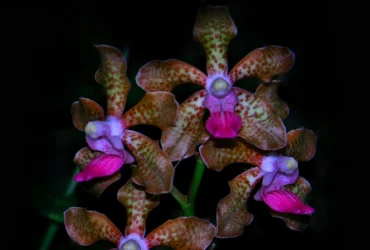 v13i2.340
v13i2.340ISSN: 1800-427X (printed)
eISSN: 1800-427X (online)
DOI:10.47605/tapro.v13i2.340
Submitted date: 21 August 2023
Accepted date: 31 October 2024
Published date: 14 December 2024
Pp. 136–137.
Two new additions to the amphibian fauna of Manipur, India
P. Gracy, Madhurima Das, H. Decemson & J. Purkayastha*
*Corresponding author. E-mail: jayaditya@gmail.com
Manipur has one of the least well-known amphibian faunas in the northeastern states of India. Sen (2004) recorded 17 species, Sarkar et al. (2005) recorded 14, and Frost (2024) listed 42 species of amphibians. Ningombam & Bordoloi (2007) recorded 25 species of amphibians from in and around Loktak Lake, Manipur. Manipur has all three orders of Amphibians, Urodela (salamanders: 1 species), Anura (frogs and toads: 39 species), and Apoda (caecilians: 2 species) (Frost 2024). A recent description of a salamander Tylototriton zaimeng (Decemson et al. 2023) illustrates the opportunities there are for the discovery of new herpetofaunal species in Manipur.
Section Editor: Romina Ghirardi
eISSN: 1800-427X (online)
DOI:10.47605/tapro.v13i2.340
Submitted date: 21 August 2023
Accepted date: 31 October 2024
Published date: 14 December 2024
Pp. 136–137.
Two new additions to the amphibian fauna of Manipur, India
P. Gracy, Madhurima Das, H. Decemson & J. Purkayastha*
*Corresponding author. E-mail: jayaditya@gmail.com
Manipur has one of the least well-known amphibian faunas in the northeastern states of India. Sen (2004) recorded 17 species, Sarkar et al. (2005) recorded 14, and Frost (2024) listed 42 species of amphibians. Ningombam & Bordoloi (2007) recorded 25 species of amphibians from in and around Loktak Lake, Manipur. Manipur has all three orders of Amphibians, Urodela (salamanders: 1 species), Anura (frogs and toads: 39 species), and Apoda (caecilians: 2 species) (Frost 2024). A recent description of a salamander Tylototriton zaimeng (Decemson et al. 2023) illustrates the opportunities there are for the discovery of new herpetofaunal species in Manipur.
Section Editor: Romina Ghirardi
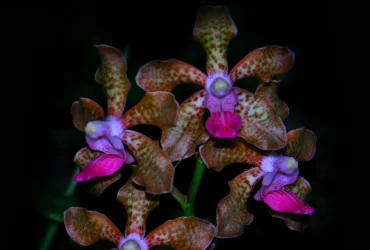 v13i2.339
v13i2.339ISSN: 1800-427X (printed)
eISSN: 1800-427X (online)
DOI:10.47605/tapro.v13i2.339
Submitted date: 1 November 2023
Accepted date: 31 October 2024
Published date: 10 December 2024
Pp. 134–135.
A neustonic and pelagic sea slug (Glaucus atlanticus) on the shore of Chennai
F. Suganya, P. Sharma & S. Prabakaran
*Corresponding author. E-mail: florencesuganya3@gmail.com
Due to the extensive work of Churchill et al. (2014), it has become evident that Glaucilla and Glaucus are different genera under the Family Glaucidae (Class: Gastropoda; Order: Nudibranchia) by the presence of a short posterior end of the body and by the arrangement of cerata in multiseriate groups. Molecular analyses indicate that the family Glaucidae is in fact, closely related to Facelinidae. Glaucus species can float on the surface of water due to their ability to maintain their buoyancy by swallowing air and holding it in gastric cavities. Their distribution is a function of the gyre systems, ocean currents driven by wind so they can become stranded. The specimens used for this study were collected along the shore of Chennai at Nochi Nagar (13.027854oN, 80.27793oE), Tamil Nadu, India on 6–7 March 2023. The specimens were preserved in 10% formaldehyde to observe morphological features. All identifications were based on Churchill et al. (2014).
Section Editor: Wuchang Zhang
eISSN: 1800-427X (online)
DOI:10.47605/tapro.v13i2.339
Submitted date: 1 November 2023
Accepted date: 31 October 2024
Published date: 10 December 2024
Pp. 134–135.
A neustonic and pelagic sea slug (Glaucus atlanticus) on the shore of Chennai
F. Suganya, P. Sharma & S. Prabakaran
*Corresponding author. E-mail: florencesuganya3@gmail.com
Due to the extensive work of Churchill et al. (2014), it has become evident that Glaucilla and Glaucus are different genera under the Family Glaucidae (Class: Gastropoda; Order: Nudibranchia) by the presence of a short posterior end of the body and by the arrangement of cerata in multiseriate groups. Molecular analyses indicate that the family Glaucidae is in fact, closely related to Facelinidae. Glaucus species can float on the surface of water due to their ability to maintain their buoyancy by swallowing air and holding it in gastric cavities. Their distribution is a function of the gyre systems, ocean currents driven by wind so they can become stranded. The specimens used for this study were collected along the shore of Chennai at Nochi Nagar (13.027854oN, 80.27793oE), Tamil Nadu, India on 6–7 March 2023. The specimens were preserved in 10% formaldehyde to observe morphological features. All identifications were based on Churchill et al. (2014).
Section Editor: Wuchang Zhang
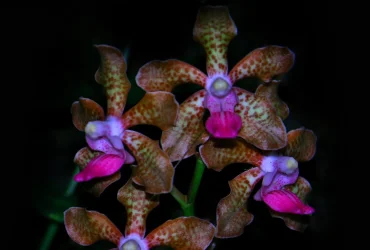 v13i2.338
v13i2.338ISSN: 1800-427X (printed)
eISSN: 1800-427X (online)
DOI:10.47605/tapro.v13i2.338
Submitted date: 29 September 2024
Accepted date: 31 October 2024
Published date: 10 December 2024
Pp. 132–133.
On the systematics and distribution of Cyrtodactylus semiadii, Java - Indonesia
A. Riyanto*, H. Wiradarma, A. Hamidy & A. Abinawanto
*Corresponding author. E-mail: awal003@brin.go.id
There are approximately 372 species of bent-toed geckos of the genus Cyrtodactylus Gray, 1827 distributed throughout most of tropical Asia from India to the Philippines and south through the Indo-Australian Archipelago, northern Australia, New Guinea, and the Solomon Islands. Cyrtodactylus semiadii Riyanto, Bauer, Yudha, 2024 is a Javan endemic gecko listed as not threatened (of least concern, LC). It was described based on specimens from two localities: (i) Paliyan, Jogjakarta (Central Java), and Tuban (East Java) separated by ~200 km. Since its description, there has been only one study on this species by Damayanti (2017) on its habitat preferences in Paliyan, Jogjakarta. That study showed that this gecko is mostly encountered in litter on the forest floor. All other 21 records were obtained from photographs in the iNaturalist citizen science platform from Central Java between 2016–2023. The molecular data on this species were first included in a phylogenetic tree by Riyanto et al. (2020) sampled from a single locality.
Section Editor: Thasun Amarasinghe
eISSN: 1800-427X (online)
DOI:10.47605/tapro.v13i2.338
Submitted date: 29 September 2024
Accepted date: 31 October 2024
Published date: 10 December 2024
Pp. 132–133.
On the systematics and distribution of Cyrtodactylus semiadii, Java - Indonesia
A. Riyanto*, H. Wiradarma, A. Hamidy & A. Abinawanto
*Corresponding author. E-mail: awal003@brin.go.id
There are approximately 372 species of bent-toed geckos of the genus Cyrtodactylus Gray, 1827 distributed throughout most of tropical Asia from India to the Philippines and south through the Indo-Australian Archipelago, northern Australia, New Guinea, and the Solomon Islands. Cyrtodactylus semiadii Riyanto, Bauer, Yudha, 2024 is a Javan endemic gecko listed as not threatened (of least concern, LC). It was described based on specimens from two localities: (i) Paliyan, Jogjakarta (Central Java), and Tuban (East Java) separated by ~200 km. Since its description, there has been only one study on this species by Damayanti (2017) on its habitat preferences in Paliyan, Jogjakarta. That study showed that this gecko is mostly encountered in litter on the forest floor. All other 21 records were obtained from photographs in the iNaturalist citizen science platform from Central Java between 2016–2023. The molecular data on this species were first included in a phylogenetic tree by Riyanto et al. (2020) sampled from a single locality.
Section Editor: Thasun Amarasinghe
Hubungi Kami
The ultimate aim of the journal is to provide an effective medium for communication of the latest and best scientific information.
Copyright © 2020 Taprobanica. All Rights Reserved
Jasa Pembuatan Website by IKT




